With three weeks remaining until the April 16, 1972 launch of Apollo 16, engineers at NASA’s Kennedy Space Center (KSC) in Florida began a countdown demonstration test (CDDT) that included fueling the Saturn V rocket as if preparing for the actual launch. The Apollo 16 astronauts, Commander John W. Young, Command Module Pilot Thomas K. “Ken” Mattingly, and Lunar Module Pilot Charles M. Duke, along with backups Fred W. Haise, Stuart A. Roosa, and Edgar D. Mitchell, continued to train for the 12-day flight, during which Young and Duke planned to explore the Descartes site in the lunar highlands while Mattingly conducted scientific observations from lunar orbit. The astronauts began their 21-day preflight medical isolation even as they trained for their spacewalks and spacecraft operations in flight simulators, and received geology briefings.
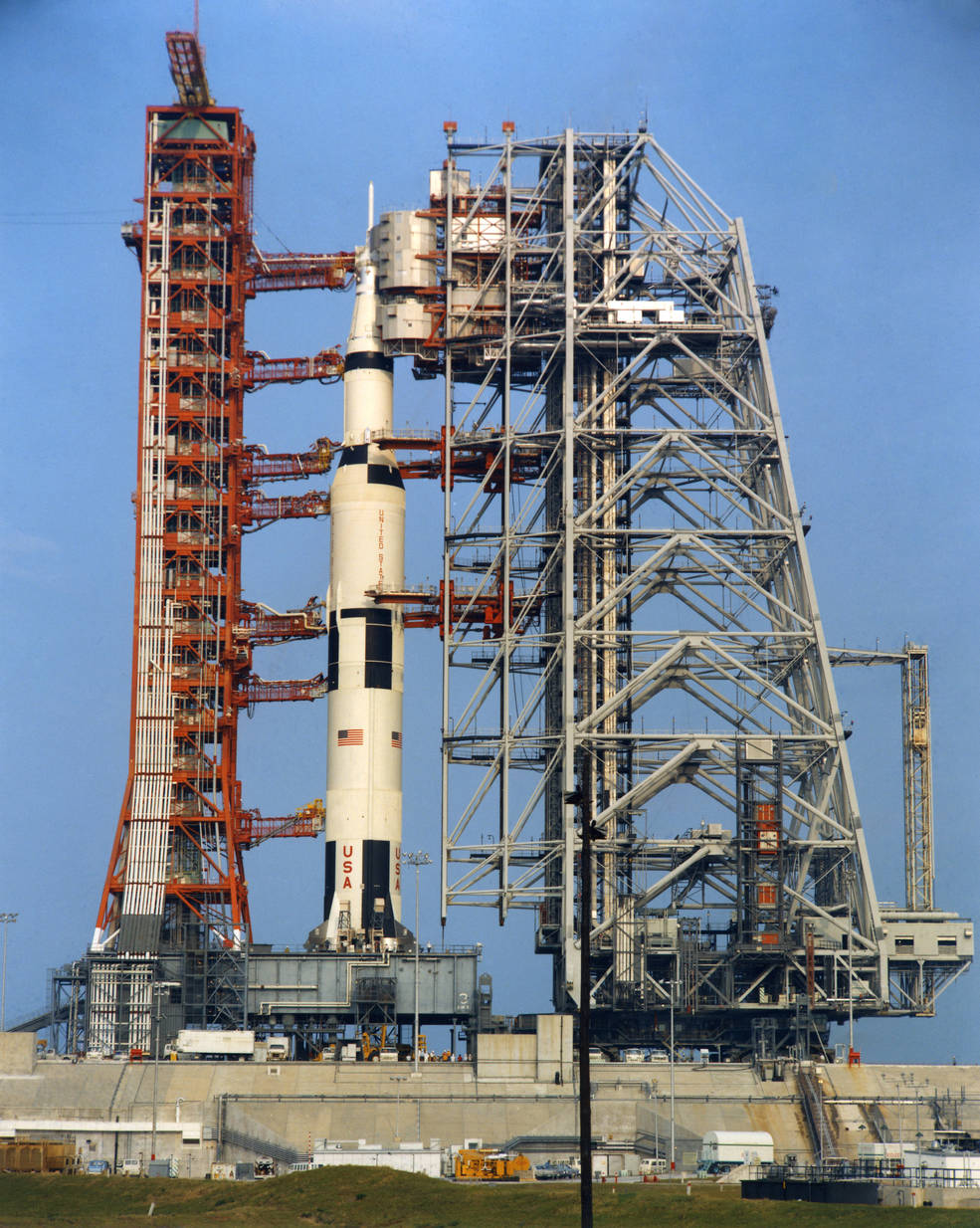
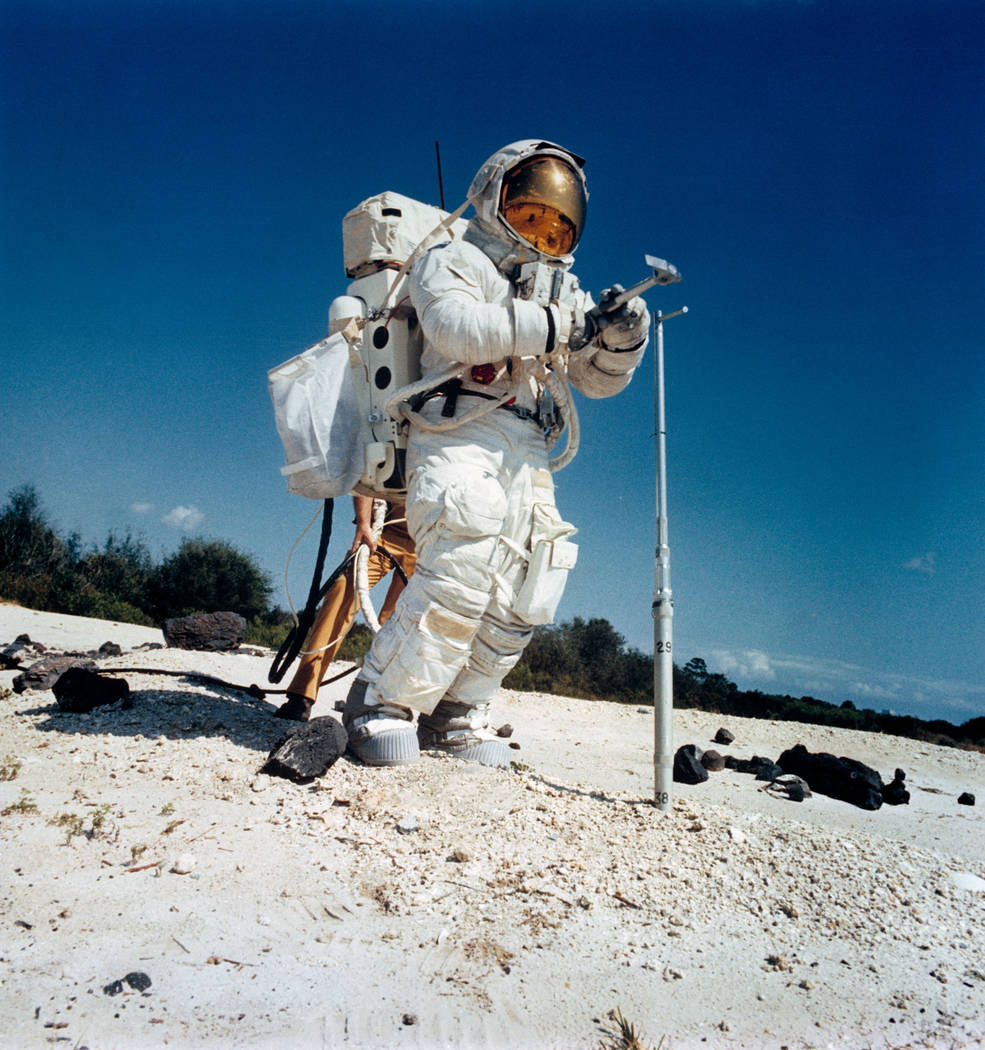
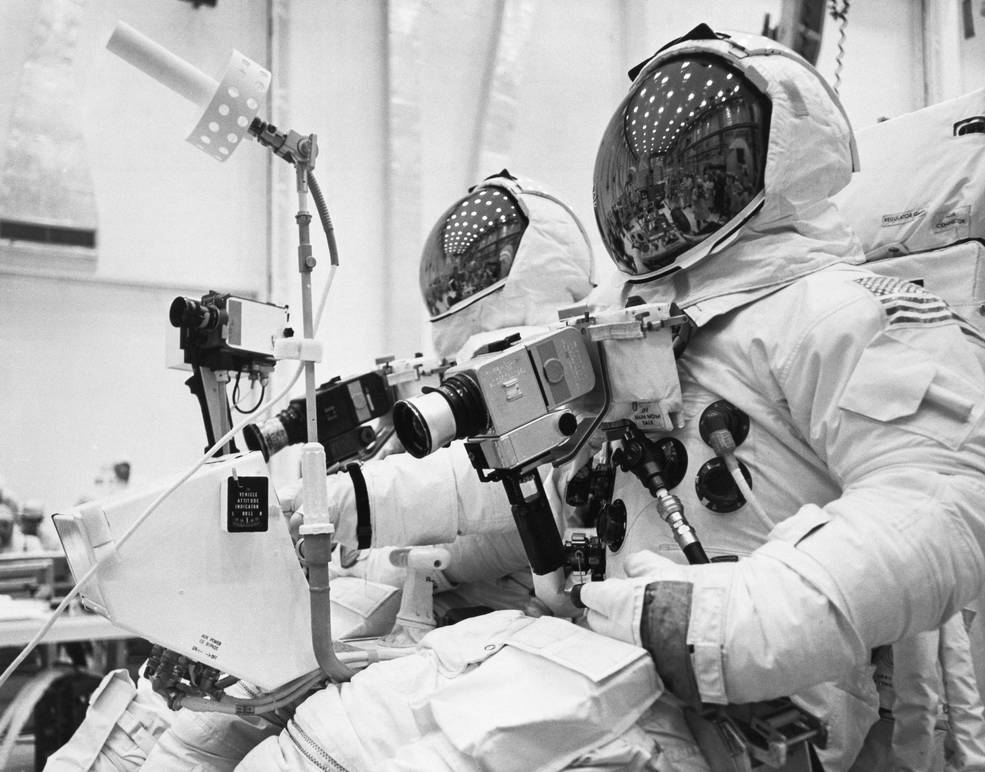
Left: The Apollo 16 Saturn V on Launch Pad 39A during the countdown demonstration test, with the mobile service structure partly in place. Middle: Apollo 16 astronaut Charles M. Duke practices taking a lunar core sample. Right: Apollo 16 astronauts Duke, left, and John W. Young practice driving the
Lunar Roving Vehicle.
The CDDT began on March 22. It exercised the test team, the launch vehicle comprising the Saturn V rocket and the Apollo spacecraft, and the launch support equipment through a complete launch countdown process, from fueling the rocket and spacecraft to a simulated liftoff. The test uncovered any issues before going into the actual countdown for launch. The test lasted seven days with two distinct phases. The wet test, completed without the astronauts, involved fueling the launch vehicle. Engineers drained the fuel at the end of the wet test. The dry test consisted of an abbreviated countdown without fuel in the rocket and involved the astronauts strapping into the Apollo Command Module as if on launch day. The test countdown proceeded until just prior to main engine ignition.
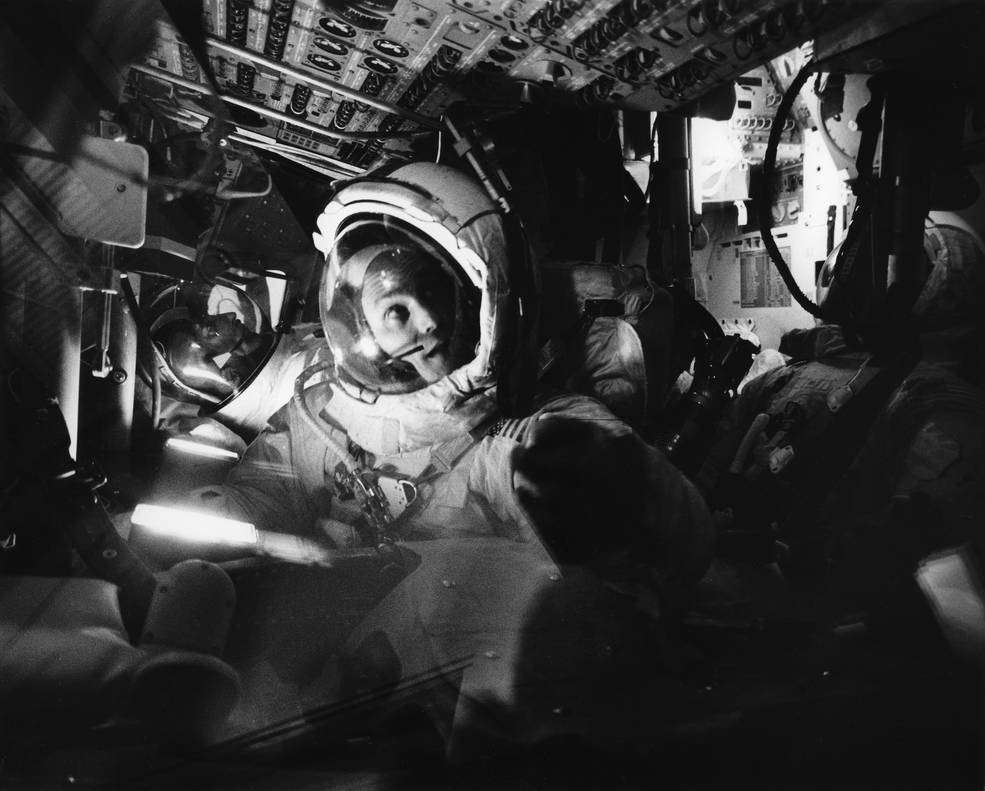
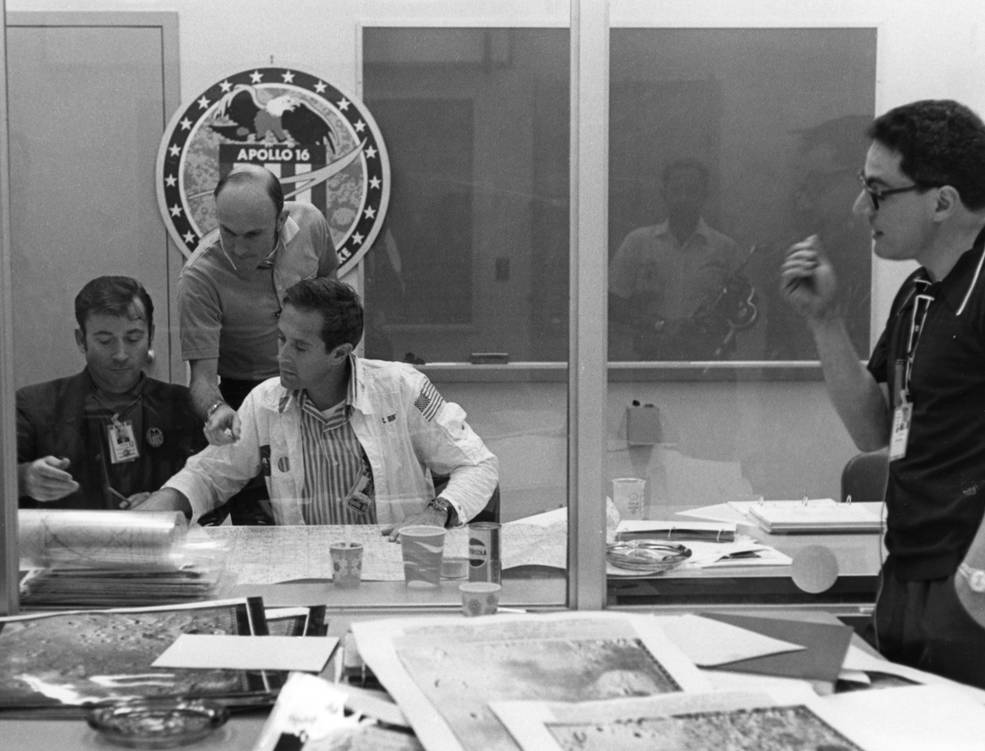
Left: Inside a Command Module simulator, Apollo 16 astronaut Charles M. Duke photographs fellow crew member Thomas K. Mattingly as he trains for the cislunar spacewalk to retrieve film canisters, as astronaut John W. Young in the background monitors the activity. Right: During preflight isolation, Apollo 16 astronauts Young, left, Mattingly, and Duke receive geology instruction separated by a glass partition from geologist Farouk el-Baz, far right.
On March 27, as part of the Crew Health Stabilization Program to protect them from any infectious diseases, the Apollo 16 astronauts and their backups began their 21-day preflight isolation. The program began earlier in the Apollo program after incidents in which astronauts’ exposure to communicable illnesses resulted in the delay of the launch (Apollo 9) and the replacement of a crew member with his backup just two days before launch (Apollo 13). Only designated people at KSC and the Manned Spacecraft Center, now NASA’s Johnson Space Center in Houston, who received proper immunizations and passed daily medical screening, could remain in contact with the crew during this final training period. In some cases, the astronauts and their trainers remained separated by a glass barrier.
To be continued…























